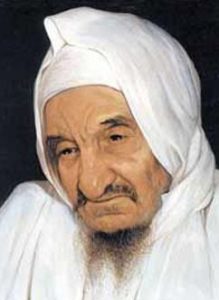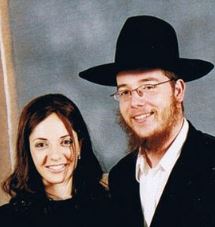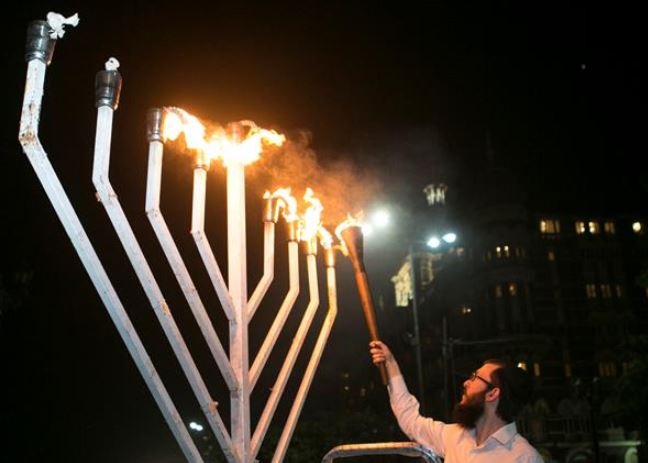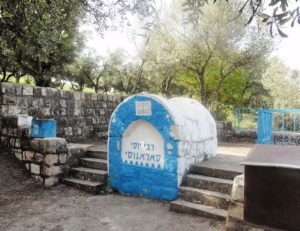A Modern Miracle Worker
 Rabbi Israel Abuhatzeira (1889-1984) was born on Rosh Hashanah in Tafilalt, Morocco to a long line of Sephardic rabbis and miracle-workers. (His grandfather was the famed Abir Yakov, who was himself a grandson of Rabbi Shmuel Abuhatzeira, who had studied with Rabbi Chaim Vital, a disciple of the great Arizal.) The young Israel grew up on an estate that included a yeshiva and a beit din (the local Jewish courthouse), surrounded by wise scholars, judges, and mystics. By the age of 12, Israel was recognized as a child prodigy, and already began living the life of a mystic – fasting regularly, rising at midnight to pray and meditate – while hiding it all from his parents. He married at 16. After his father passed away and his older brother was murdered, the community begged him to take over as the town rabbi. Although only 22 years old, and exceedingly humble and modest, he eventually accepted. Within a decade, he was famous across Morocco, and as far as Israel, as a wise rabbi, a saint and a miracle-worker. On his first trip to the Holy Land, it is said that he reopened the Arizal’s ancient synagogue, which had been sealed off for years due to an apparent curse. Though he wished to stay in the Holy Land, Rabbi Abuhatzeira returned to Morocco to take care of his community. When the conditions for Jews in Morocco deteriorated even further after the founding of the State of Israel, Rabbi Abuhatzeira took it upon himself to facilitate Moroccan Jewry’s migration back to their Promised Land. He made the move himself in 1950. By then, he carried a new title: Because his prayers and blessings were known to always came true, he was referred to as Baba Sali, the “Praying Father”. The main possessions that he brought over from Morocco were 30 crates of books and manuscripts, together with thousands of pages of his own holy writings. He is considered one of the greatest kabbalists and holiest rabbis of recent decades. He was sought after not only by Jews, but by Arabs as well, and stories of his miracles abound. He took ill several months after his 94th birthday, and passed away soon after. The Baba Sali’s funeral was attended by over 100,000 people, and his grave in the town of Netivot is now a popular pilgrimage site. His yahrzeit begins tonight.
Rabbi Israel Abuhatzeira (1889-1984) was born on Rosh Hashanah in Tafilalt, Morocco to a long line of Sephardic rabbis and miracle-workers. (His grandfather was the famed Abir Yakov, who was himself a grandson of Rabbi Shmuel Abuhatzeira, who had studied with Rabbi Chaim Vital, a disciple of the great Arizal.) The young Israel grew up on an estate that included a yeshiva and a beit din (the local Jewish courthouse), surrounded by wise scholars, judges, and mystics. By the age of 12, Israel was recognized as a child prodigy, and already began living the life of a mystic – fasting regularly, rising at midnight to pray and meditate – while hiding it all from his parents. He married at 16. After his father passed away and his older brother was murdered, the community begged him to take over as the town rabbi. Although only 22 years old, and exceedingly humble and modest, he eventually accepted. Within a decade, he was famous across Morocco, and as far as Israel, as a wise rabbi, a saint and a miracle-worker. On his first trip to the Holy Land, it is said that he reopened the Arizal’s ancient synagogue, which had been sealed off for years due to an apparent curse. Though he wished to stay in the Holy Land, Rabbi Abuhatzeira returned to Morocco to take care of his community. When the conditions for Jews in Morocco deteriorated even further after the founding of the State of Israel, Rabbi Abuhatzeira took it upon himself to facilitate Moroccan Jewry’s migration back to their Promised Land. He made the move himself in 1950. By then, he carried a new title: Because his prayers and blessings were known to always came true, he was referred to as Baba Sali, the “Praying Father”. The main possessions that he brought over from Morocco were 30 crates of books and manuscripts, together with thousands of pages of his own holy writings. He is considered one of the greatest kabbalists and holiest rabbis of recent decades. He was sought after not only by Jews, but by Arabs as well, and stories of his miracles abound. He took ill several months after his 94th birthday, and passed away soon after. The Baba Sali’s funeral was attended by over 100,000 people, and his grave in the town of Netivot is now a popular pilgrimage site. His yahrzeit begins tonight.
24 Amazing Torah Prophecies That Came True
Words of the Week
A man’s kind deeds are used by God as seeds for the planting of trees in the Garden of Eden; thus, each man creates his own Paradise. The reverse is true when he commits transgressions.
– Rabbi Dov Ber of Mezeritch



